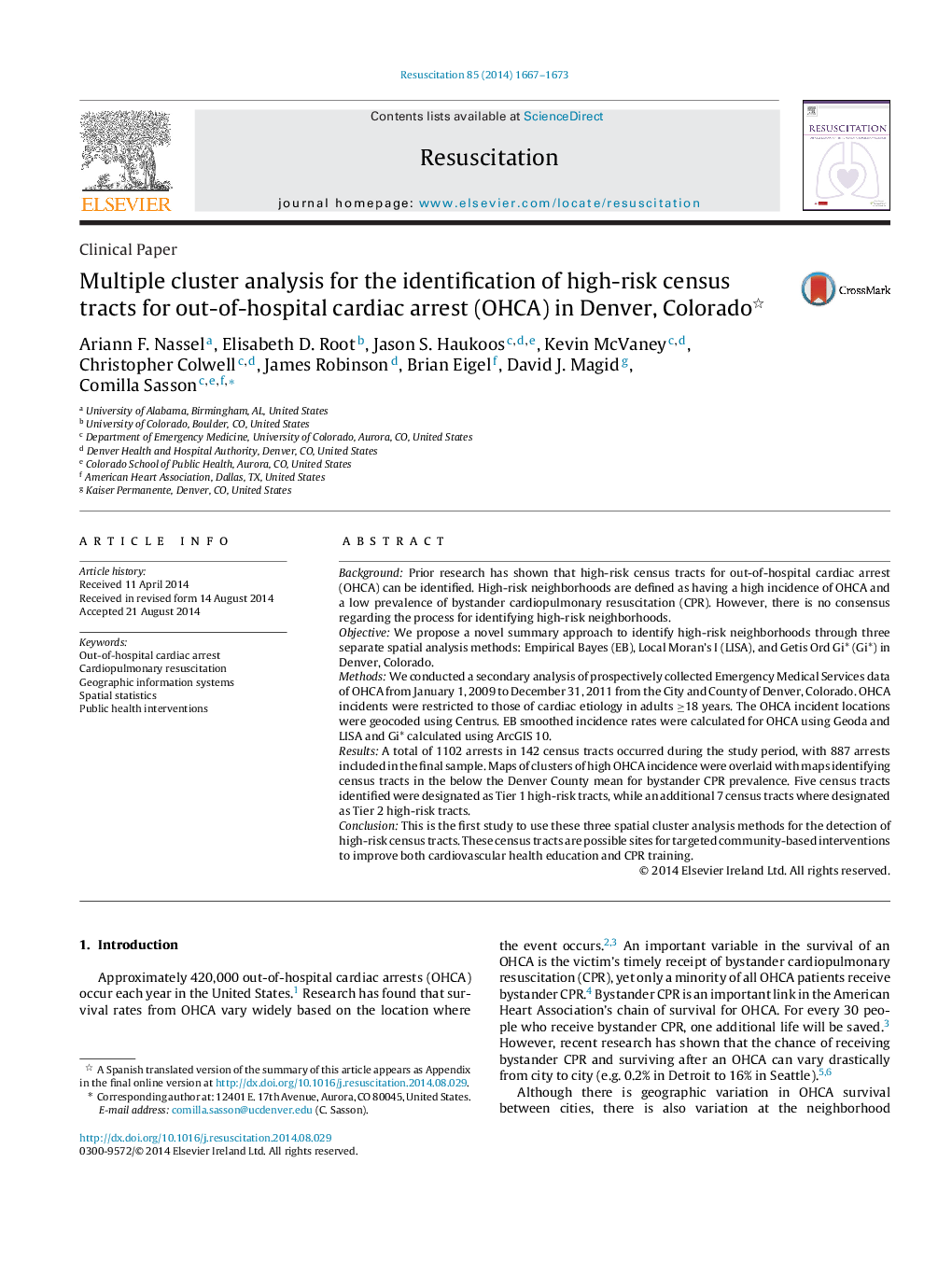| Article ID | Journal | Published Year | Pages | File Type |
|---|---|---|---|---|
| 5997879 | Resuscitation | 2014 | 7 Pages |
BackgroundPrior research has shown that high-risk census tracts for out-of-hospital cardiac arrest (OHCA) can be identified. High-risk neighborhoods are defined as having a high incidence of OHCA and a low prevalence of bystander cardiopulmonary resuscitation (CPR). However, there is no consensus regarding the process for identifying high-risk neighborhoods.ObjectiveWe propose a novel summary approach to identify high-risk neighborhoods through three separate spatial analysis methods: Empirical Bayes (EB), Local Moran's I (LISA), and Getis Ord Gi* (Gi*) in Denver, Colorado.MethodsWe conducted a secondary analysis of prospectively collected Emergency Medical Services data of OHCA from January 1, 2009 to December 31, 2011 from the City and County of Denver, Colorado. OHCA incidents were restricted to those of cardiac etiology in adults â¥18 years. The OHCA incident locations were geocoded using Centrus. EB smoothed incidence rates were calculated for OHCA using Geoda and LISA and Gi* calculated using ArcGIS 10.ResultsA total of 1102 arrests in 142 census tracts occurred during the study period, with 887 arrests included in the final sample. Maps of clusters of high OHCA incidence were overlaid with maps identifying census tracts in the below the Denver County mean for bystander CPR prevalence. Five census tracts identified were designated as Tier 1 high-risk tracts, while an additional 7 census tracts where designated as Tier 2 high-risk tracts.ConclusionThis is the first study to use these three spatial cluster analysis methods for the detection of high-risk census tracts. These census tracts are possible sites for targeted community-based interventions to improve both cardiovascular health education and CPR training.
